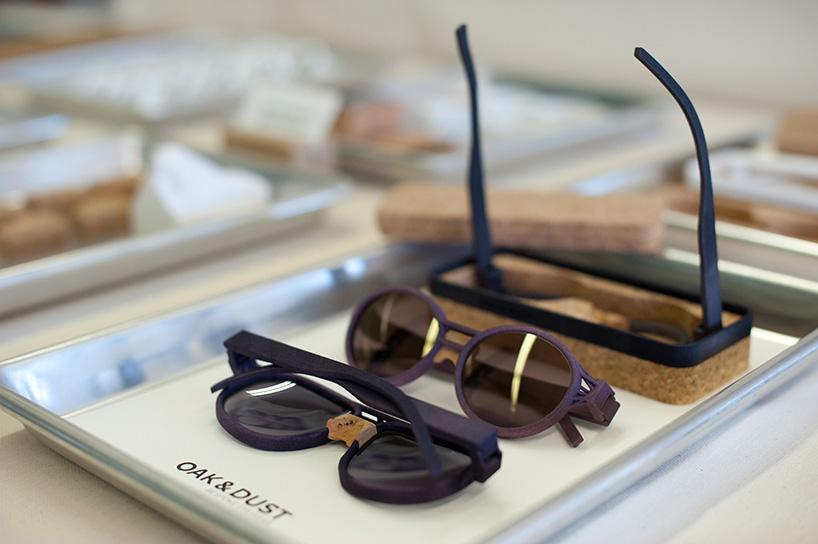Adrian Goegl has a vision that far surpasses just making glasses. Combining his interests in parametric design and generative manufacturing with his background as an optician, this industrial designer from Switzerland brings us “Oak and Dust” 3D-printed eyewear–a uniquely intense concept based in intellectual, industrial design.
Additive manufacturing is the perfect vehicle for the path Goegl wants to pave for his modern business model. Using Rhino CAD modeling, and a plug-in called Grasshopper, Goegl was able to design and print 3D prototypes of the eyewear, highlighting all the ways 3D design and 3D printing will revolutionize the optometry industry, with digitized designs, revisions, and prototypes saving time and expense.
“With this project I wanted to design a serious and useful concept which enables us to use 3D-printers directly at the point of sale in optical stores. the focus of my project was not how exactly the form of spectacle frames should be but rather how these frames can be designed, manufactured, and sold in the near future.”
During Geogl’s time working with customers and the eyewear products currently available, he made notes to fix some common challenge, such as:
- spectacles poorly distributing weight on the nose
- glasses sliding down the face easily
- over half of the cases delivered with glasses not holding them properly
Goegl chose cork as the obvious material choice to solve all the aforementioned problems. With cork, when a digitial scan of the customer’s nose is perfomed, they can mill the material for perfect fit. The bridge, made of cork, is easily removed and changed. The glasses are light, shouldn’t press into the face, and should remain at eye level due to the material. Cases can be 3D-printed along with the glasses, all at customer’s specifications and preferences. Sounds like a pretty perfect picture!
Goegl has a vision regarding the entire process, and it’s a mixture of pretty high-level science and intellectual concept. Along with his goal to process the eyewear in line with generative manufacturing, his product, “using computing capabilities to expedite the process,” is a good example of using 3D printing to show how quickly products can be designed and prototyped, revisited, upgraded—and coming to market at lightning speed—rather than at a snail’s pace with different teams, processes, machines, and approval departments holding up products going to market.
With parametric design in mind, his ultimate goal is not just in making nice glasses for people to wear but in applying rules to the process that show the relationship between design intent and design response as a whole—for all industrial examples.
From both a superficial and industrial/business point of view, I have great appreciation for what Goegl is doing. Although he states that he is less concerned with the actual product he currently has on display and is more concerned with providing a design and production innovation, the current eyewear protoypes seem to be well-packaged with an organic look that will surely draw consumers.
Do you see Goegl’s end product as a good example of generative manufacturing? Have you seen any other 3D-printed eyeglasses? Please share your thoughts and experiences with us in the Goegl 3D printer eyewear forum thread at 3DPB.com.
[Source: DesignBoom.com, Images Courtesy of Adrian Goegl]